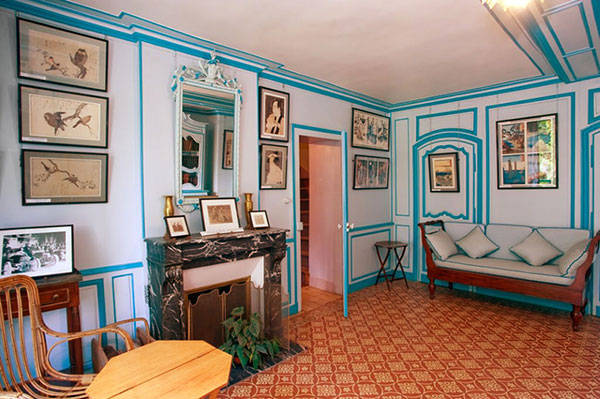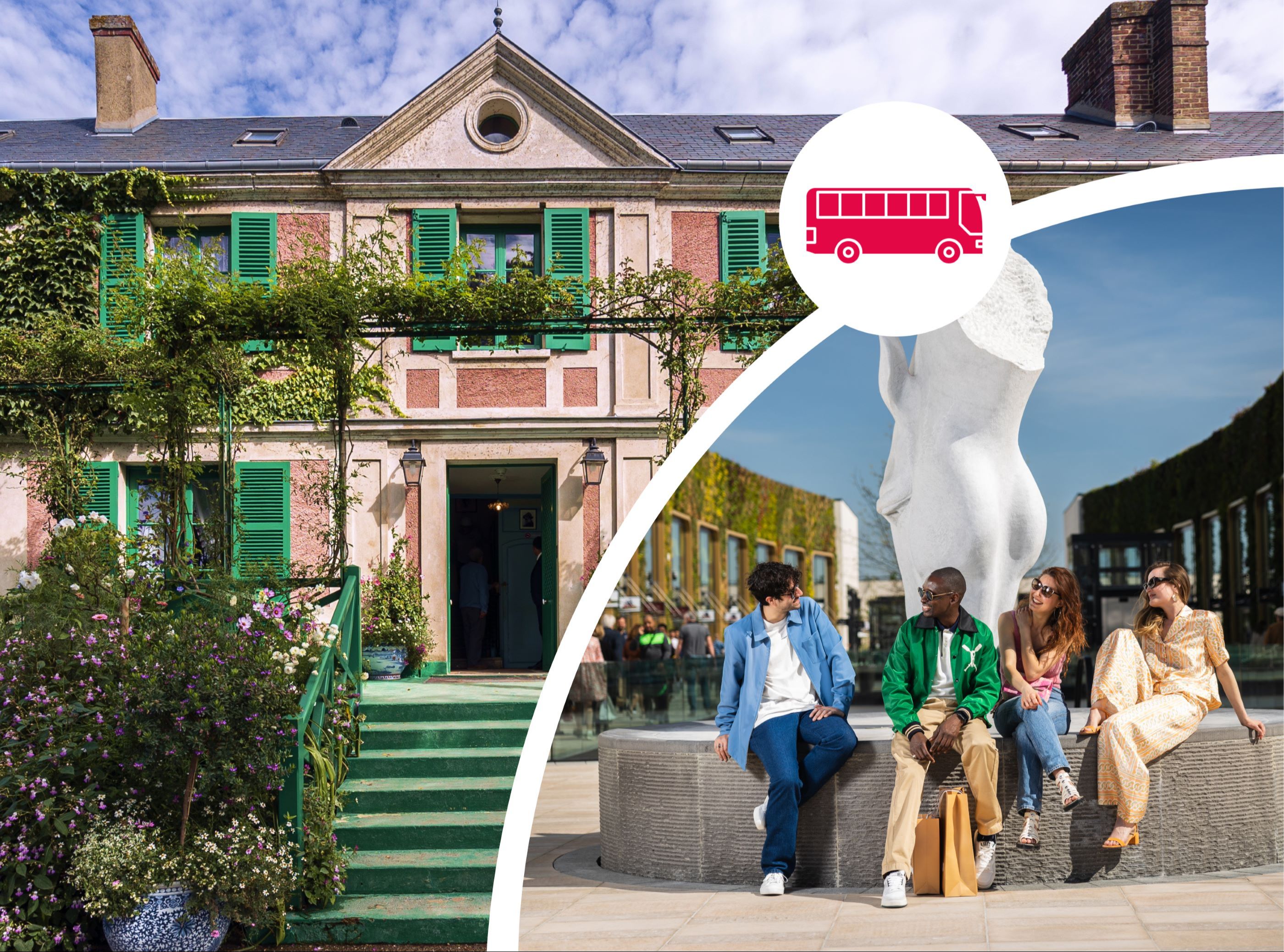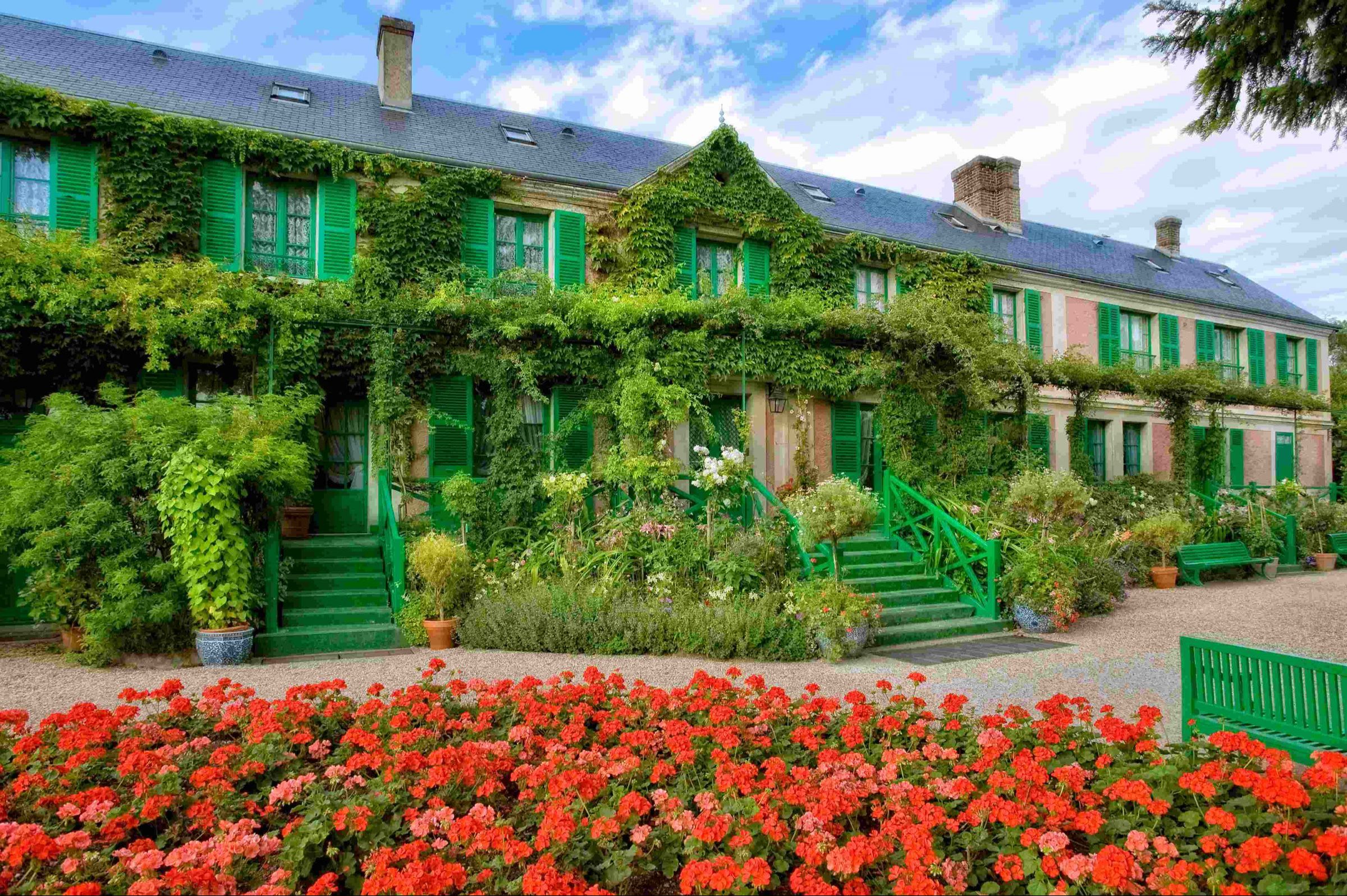Claude Monet’s House and Workshop
The House

Monet spent 43 years at his Giverny residence where, in 1926, he would also take his last breath surrounded by his friend Georges Clémenceau and his stepdaughter, Blanche.
During those decades the Giverny residence was brimming with life. There Monet lived with Alice Hoschedé and her six children from a first marriage to Ernest Hoschedé, as well as Monet’s own two children. This 10-member family was used to receiving guests for dinner and to the comings-and-goings between the house and the gardens all day long.
Ground Floor
The visit will begin on the ground floor. Every room contains its own visual universe, dominating color, and particular charm.
The Little Blue Salon

This is the sitting room where Alice would read, at times with her children. The room was painted in white with the wall molding and trimming in blue except for the brick-colored, ceramic flooring that provides a stark contrast to the rest. The furniture is in harmony with the wall colors as the former, painted in the same tones, seems to blend in almost imperceptibly. Various Japanese prints decorate the walls just like in the dining room.
The Dining Room

The Dining Room was the house’s central room and it left a strong impression because it was rare during this period to have such a room glowing and shimmering with color. The walls, curtains and furniture are all in yellow and even the earthenware dishes, which Monet took out for special occasions, was painted yellow with the edges in blue. Various Japanese prints that Monet had collected since the 1850s decorate the walls, showcasing some of his most admired Japanese artists like Katshushika Hokusai, Utagawa Hiroshige and Kitagawa Utamaro. In fact, his collection totals more than 200 prints! The dining room has two openings that give out onto a balcony from which one can see the garden. Made for receiving guests, the table seats fourteen.
The Kitchen

Adjacent to the dining room is the kitchen whose fireplace and tile flooring are decorated in a ceramic blue fabricated in the French city of Rouen. This blue creates a peaceful atmosphere that significantly contracts with the lively yellow seen in the dining room. Copper utensils also provide warmth. Open onto the dining room, the kitchen also has French doors that give direct access to the gardens while also letting in a good deal of light.
Main Entrance and Pantry

Interestingly, a small pantry is found at the house’s main entrance and was used to conserve goods in a cool environment. The entrance contains furniture made of bamboo that evoke middle 19th century tastes for everything Japanese as well as a buffet used for storing food. Above the buffet there is a Japanese print. From the entrance one can make out the driveway which provides a glimpse of the “Clos Normand” or the walled Normandy Garden.
The Workshop/Living room

Before constructing a second workshop in the garden to receive art aficionados, sellers, and collectors, his first painting workshop is found indoors in the living room. From 1899 and on, Monet’s workshop also became a smoking parlor. The walls exhibit his paintings (today they are only reproductions) and each one represents a certain stage in the artist’s life. The workshop has been reconstituted almost identically to what it was when Monet was alive.
Upstairs
The bedrooms and private bathrooms of Monet and his partner, Alice, are upstairs.
Claude Monet’s Bedroom

Located just above the workshop/living room, Monet’s bedroom is rather somber in tone and in decoration but has a lovely view of the gardens. From the window, Monet could easily see and draw inspiration from the garden’s flowers. He once said, “Perhaps I owe it to the flowers to paint them.” All the walls are decorated in works painted by his Impressionist friends. The bedroom also has a large, 18th century cylindrical Mahogany writing desk.
Alice Hoschedé-Monet’s Bedroom

Alice’s bedroom is located just next to Monet’s and has its own bathroom as well as a tiny alcove used for sowing. Japanese prints depicting female portraits decorate the bedroom’s walls.
Blanche Hoschedé-Monet’s Bedroom

The bedroom of Monet’s stepdaughter, Blanche Hoschedé, is decorated in floral wallpaper, cream and rose tones and evokes nature. Blanche lived in the Giverny residence from 1883 to 1897 and later from 1926 to 1947. Also a painter, she was Monet’s only student. She greatly contributed to the upkeep and preservation of Giverny’s gardens.
Monet's house is one of the top things to do during any Giverny tour ! In this place, you'll soak in the atmosphere that isnpired the artist so much.
ParisCityVision would like to thank the Claude Monet Foundation for permitting the use of the above photographs which remain the sole property of the Foundation, all rights reserved. Any use of these photographs without the Foundation’s authorization is forbidden.


